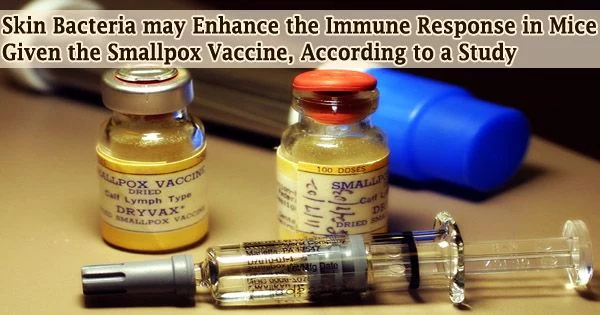Smallpox was eradicated worldwide in the 1980s thanks to intradermal vaccination with the vaccinia virus. The variola virus, an orthopoxvirus, is the cause of smallpox, an acute infectious disease. Before it was eradicated, it was one of the most terrible diseases known to mankind, responsible for millions of fatalities. It is thought to have been around for at least three thousand years.
According to a study by Evgeniya V. Shmeleva, Brian J. Ferguson, and Geoffrey L. Smith at the University of Cambridge in the United Kingdom and colleagues, there has been a significant increase in skin bacteria, which may have an impact on the immune system.
Multiple skin punctures were used to administer the smallpox vaccine, and this procedure may have exposed the immunization site to local germs. However, it is unclear how smallpox vaccine affects skin microbiota and whether these bacteria have an impact on vaccination effectiveness.
The first effective vaccination was the smallpox shot, which Edward Jenner initially administered in 1796. He noted that milkmaids who had previously contracted cowpox did not develop smallpox and demonstrated that vaccinia vaccination protected against variola vaccination.
Many different types of microorganisms can cause skin infections, which can have moderate to serious symptoms. While some infections can be treated at home or with over-the-counter drugs, some may need to be treated by a doctor.
Researchers employed a mouse model that included normal mice, some of which received antibiotic treatment, as well as germ-free mice and normal mice to examine the role of bacteria in the immunological response to smallpox vaccine. After administering the vaccinia virus vaccination to the mice, the researchers examined how each group’s immune system responded.
This study highlights a role for commensal bacteria in enhancing the immune response following dermal vaccination and has implications for other vaccines based upon infectious poxviruses or other viral vectors that are delivered by dermal vaccination. We discovered that dermal vaccination with the smallpox vaccine led to a large increase in local bacteria, which increased the vaccination lesion size and affected the immune response. This suggests that manipulation of commensal skin microbiota might be a way to enhance the efficacy of intradermal vaccines.
According to the authors
In 1967, the World Health Organization began a more aggressive campaign to eradicate smallpox. For many years, widespread immunization and surveillance were carried out all throughout the world. The final natural case was recorded in 1977 in Somalia.
Smallpox was the only infectious disease to acquire this distinction, according to a 1980 WHO declaration. This continues to be one of the most significant and significant public health victories in history. First-time vaccine recipients react differently from individuals who are receiving a booster shot.
After intradermal vaccination of mice with germs, the researchers discovered a 1000-fold increase in skin microbiota, larger lesions, and greater levels of antibodies, indicating an accelerated skin-based inflammatory response in the presence of bacteria.
Animals that had been given antibiotics or were germ-free exhibited less infection-related lesions and skin irritation. All groups demonstrated comparable levels of memory T cells and resistance to reinfection, though.
Further investigation is necessary to see whether the findings in mice may be generalized to other vaccinations or to vaccination of humans as the study was restricted to the immunization of mice with the vaccinia virus.
According to the authors, “This study highlights a role for commensal bacteria in enhancing the immune response following dermal vaccination and has implications for other vaccines based upon infectious poxviruses or other viral vectors that are delivered by dermal vaccination.”
The authors add: “We discovered that dermal vaccination with the smallpox vaccine led to a large increase in local bacteria, which increased the vaccination lesion size and affected the immune response. This suggests that manipulation of commensal skin microbiota might be a way to enhance the efficacy of intradermal vaccines.”





